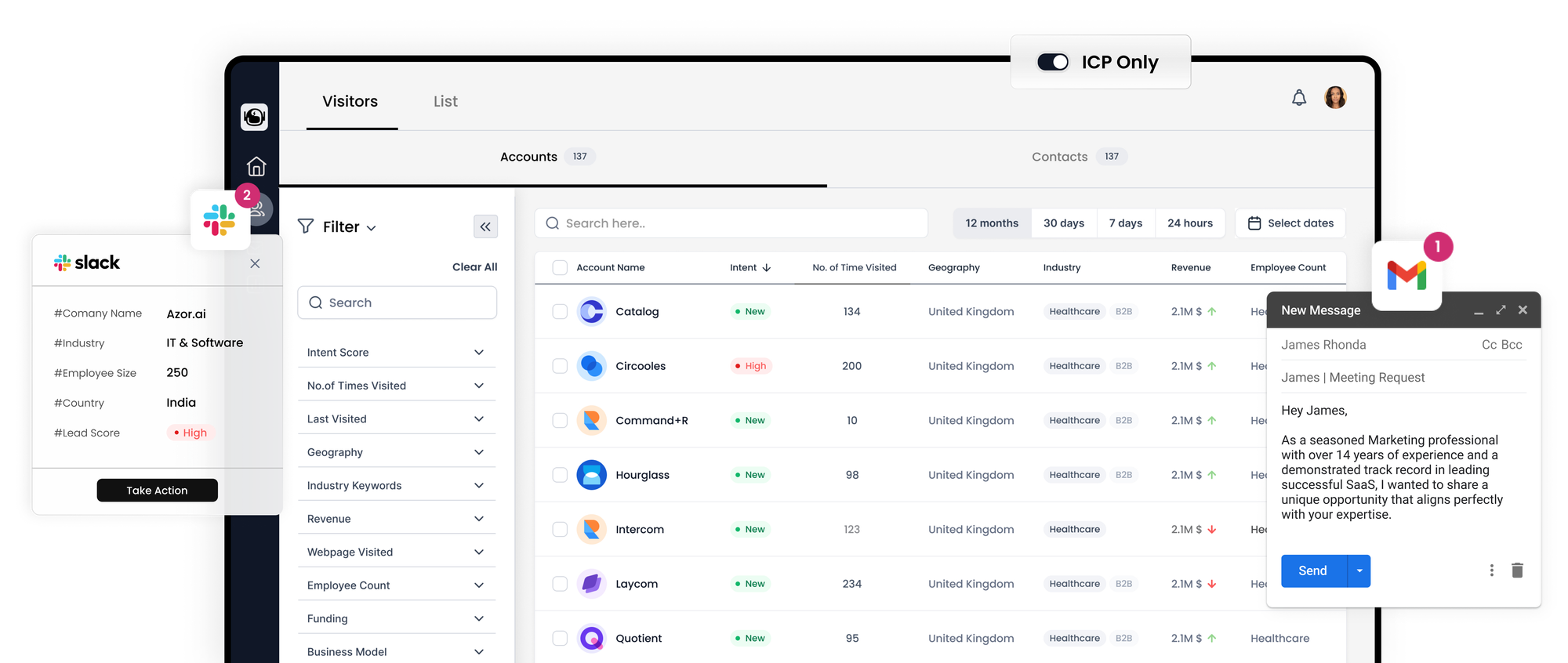The Definitive Guide to Account-Based Marketing: Strategy, Processes, Case Studies, and Emerging Trends

Summary Overview:
In the marketing world, mass messages to prospects and customers are common, yet it's well-known that personalized, targeted campaigns yield better results. Account-based marketing (ABM) epitomizes this targeted approach and is considered one of the most effective marketing channels. This guide, supported by over 30 ABM statistics, aims to explain what ABM is, its benefits, and how to successfully launch your first ABM campaign with five actionable tips.

The Prevalence of Generic Marketing Strategies:
Many marketers, perhaps inadvertently, adopt a 'spray and pray' approach, disseminating generic messages and hoping they resonate with a small fraction of the audience who may eventually become customers. While some efforts at creating buyer personas and personalizing communications exist, the majority still rely on broad, one-size-fits-all messaging. This approach often overlooks the fact that not every consumer is a suitable match for your product.
Rethinking Marketing Strategies:
Investing resources in selling to customers who are not a perfect match for your product or service is inefficient and likely to result in customer churn. A more effective strategy is to invest in attracting, nurturing, and selling to prospects that are an ideal fit for your products, with a laser-focused, highly targeted approach for specific businesses. This is where ABM plays a crucial role.
Understanding Account-Based Marketing:
ABM is a strategic approach in sales and marketing that employs highly targeted, personalized communication to win new business from specific companies or accounts. Unlike broad marketing campaigns, ABM targets particular companies, engaging with key decision-makers to cultivate relationships and create future sales opportunities, often referred to as “land and expand.” ABM essentially inverts the traditional marketing funnel, emphasizing personalized and relevant campaigns for target audiences.
The Growing Importance of ABM:
Originally pioneered by ITSMA in 2004, ABM's potential for delivering personalized campaigns is now being fully recognized. A SiriusDecisions study found that 92% of B2B marketers consider ABM extremely important to their marketing efforts, ranking it just behind video marketing in priority for B2B tech marketers.
Key Benefits of Implementing an ABM Strategy:
1. Sales and Marketing Alignment:
- Companies with aligned sales and marketing teams achieve higher revenue and brand awareness, and increase average deal sizes.
- ABM aligns both teams, focusing on closing a single account, leading to better lead quality and less time wasted on unqualified leads.
- 80% of marketers with ABM programs report alignment with sales.
2. High Return on Investment (ROI):
- Marketing ROI is crucial, especially when the department is seen as a cost center.
- ABM is reported to outperform all other marketing investments, with 87% of ROI-measuring marketers stating that ABM yields higher returns compared to other initiatives.
- ABM's focus on specific targets leads to more efficient spending and higher ROI.
3. Increased Revenue:
- The primary goal for most marketing initiatives is revenue increase.
- 60% of companies using ABM saw at least a 10% increase in revenue within 12 months, and 20% saw an increase of 30% or more.
- ABM has been shown to increase average deal sizes, with 91% of companies reporting an increase, and 25% seeing increases over 50%.
Implementing ABM involves re-evaluating the ideal target customer, learning from high-value customers, and targeting similar companies to increase average deal sizes over time. This comprehensive guide aims to provide a deep dive into the world of ABM, illustrating how it can be a transformative strategy for businesses looking to refine their marketing efforts and boost their bottom line.
Initiating Account-Based Marketing: A Step-by-Step Guide
Understanding ABM and its benefits is only the beginning. Despite its recognition as a crucial marketing strategy, about 30% of marketers have yet to adopt account-based marketing (ABM). If you're looking to start and launch your first ABM campaign, here's a structured approach to guide you through the process.
1. Selecting Target Accounts
- Begin your ABM campaign by identifying a list of key accounts.
- Rather than relying on sales teams' input alone, which can be subjective, use your existing customer data to identify companies resembling your ideal target customer.
- Utilize tools like LinkedIn to find "similar companies" based on criteria like company size, industry, and specialties. This method quickly generates a list of potential target accounts.
- However, not all suggestions will perfectly match your ideal profile, so further research each recommended account.
2. Conducting Account Research
- ABM demands thorough research on each account, focusing on aspects like market (industry, competitors, company size), company specifics (revenue, market share, history), key people (management, influencers, roles with buying power), and organizational relationships.
- Information can often be sourced from company websites, press releases, or annual reports.
- A significant challenge in this phase is identifying and gaining access to key decision-makers, as modern buying processes often involve multiple influencers.
3. Creating Relevant and Personalized Content
- The key to engaging B2B buyers is delivering content that is both personalized and relevant to their specific needs.
- Review and categorize your existing content based on its relevance to your target customer and the sales funnel stage.
- Consider creating new content based on insights gained from existing customers who match your target profile.
- The objective is to produce content that addresses each stage of the customer journey, thus facilitating lead nurturing and influencing the buyer’s vendor selection.
4. Effective Content Distribution
- The goal is to ensure your content reaches the right individuals in the target accounts.
- Email remains a powerful tool for distributing personalized content, whether to individual contacts, groups within an account, or a selection of companies fitting your ideal customer profile.
- Besides email, other channels like IP-tracking, retargeting, paid social advertising, and even direct mail can be effectively utilized.
5. Measuring Campaign Results
- ABM success is not gauged by traditional metrics like lead quantity or website conversion rates.
- Focus on broader metrics such as awareness (website visits, social media interactions), engagement (website behavior, email interactions), relationships (content downloads, product trials), and ROI (comparing campaign spend with total revenue).
- Measure the impact of your ABM campaign on sales cycle length, deal size, and total revenue compared to non-ABM activities.
Conclusion:
ABM represents a shift from traditional volume-based marketing metrics to a focus on targeted, meaningful engagement with a few select accounts. While this approach might result in lower vanity metrics, it aims to significantly increase revenue. In essence, ABM is about quality over quantity, where the success of a campaign is measured not by the number of leads, but by the relevance and potential value of each lead or engagement.
